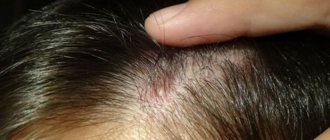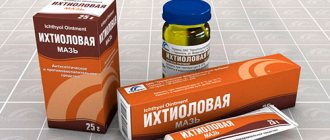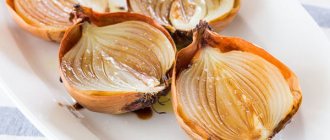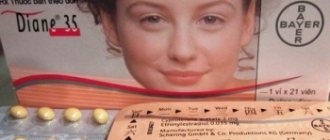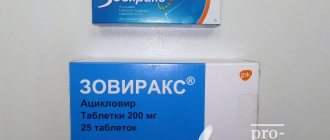If acne appears, you can use medications with an antibacterial effect. Levomycetin in the fight against inflammation is used mainly externally, making masks, alcohol lotions with solutions, applying ointments, using talkers. Active substance - Chloramphenicol destroys pathogens on the skin, dries out acne and reduces inflammation. In some cases, the doctor may prescribe this drug for oral administration in a course.
You should not take this drug on your own due to the presence of possible side effects and the inability to correctly calculate the dosage and duration of treatment, as well as its expediency. It is necessary to adhere to certain rules of use to prevent the development of possible side effects.
Composition and release form
Dosage forms:
- Pills;
- Eye drops 0.5% and 1%;
- Ointments and liniments;
- Also 1 and 3% alcohol solution for external use.
The active ingredient is Chloramphenicol, a synthetic antibiotic produced by a certain species of Streptomycetes. Its main difference is its wide range of antibacterial activity.
Chloramphenicol is the international nonproprietary name of the active substance; more often this medicine is found under the trade name Levomycetin when we are talking about tablet forms or eye drops, as well as solutions. Also, this trade name is firmly established among the people for all dosage forms containing Chloramphenicol. Ointment-like external agents containing this active substance are found under the names:
Levomekol;
Levosin;
Synthomycin liniment.
The latter remedy is mistakenly called emulsion and ointment. In fact, liniment is something between them.
What is included in acne talkers and why are they good?
There are several recipes for mash that are used to treat rashes. Their composition varies: the ingredients are selected taking into account the characteristics of the skin and the problem that needs to be solved.
The mash contains components that:
- provide antimicrobial action (antibiotics);
- exhibit drying properties;
- cleanse the epidermis of dead particles and other contaminants;
- block inflammation;
- activate cell regeneration;
- stimulate metabolic processes.
Common components of chatterboxes are the following ingredients:
- chloramphenicol;
- sulfur;
- zinc;
- aspirin;
- alcohol (ethyl, ammonia, camphor);
- salicylic acid;
- tincture of calendula;
- erythromycin;
- boric acid;
- streptocid.
Acne is often a sign of a malfunction of the organs and systems of the body, the result of poor nutrition or the use of low-quality cosmetics. Therefore, treatment of rashes should always be comprehensive: doctors recommend combining the use of external remedies, including talkers, with a rational menu, a healthy lifestyle, suitable skin care and therapy for existing diseases.
Mechanism of action
Chloramphenicol is a substance in the form of a white crystalline powder. It dissolves well in alcohol. The substance inhibits the action of enzymes that are responsible for the growth and development of bacterial microorganisms. As a result, protein production in bacterial cells is disrupted and the construction of cellular structures deteriorates.
Bacteria stop growing, developing and multiplying. Their death leads to the elimination of the inflammatory process on the skin. It penetrates well into tissues, so subcutaneous pimples dry out over time, decrease in size and disappear. There are no traces left on the skin after they disappear.
The medicine has a detrimental effect on many gram-positive and gram-negative cocci, bacteria, anaerobes, rickettsia, spirochetes, and some large viruses. This remedy has little effect on acid-fast bacteria, Pseudomonas aeruginosa, clostridia and protozoa. Microorganisms gradually get used to the active substance, which does not allow the medicine to be used for a long time.
Contraindications
There are some contraindications to the use of chloramphenicol for acne. You should not apply medications containing this active ingredient if you are allergic to the active ingredients, eczema, psoriasis, or fungal skin infections. For oral dosage forms - contraindicated during pregnancy and breastfeeding, blood cell pathology, various forms of anemia, and should be used with caution in case of problems with the kidneys and liver. Do not apply to the skin of children under 3 years of age.
Side effects
Patients allergic to chloramphenicol may experience allergies such as rash, hives, and itching. With prolonged use, the skin becomes too dry, begins to peel and itch. Redness appears at the site of application and bacterial resistance to the active components of the drug develops. In rare cases, when taken orally, angioedema, thrombocytopenia, and anemia appear. When the first symptoms appear, you must stop using the drug, take an antihistamine and seek help from a doctor.
How to use Levomycetin for acne and acne
Apply the medicine externally. Before application, wash with warm water. You can use soap, tonic, lotion or gel. Then you need to dry the skin. Better to use a disposable paper towel. There are also several effective and proven mask recipes.
Masks
Masks with chloramphenicol will help you in the fight for the beauty of your skin, improve its condition and appearance. To obtain maximum effect, we recommend that you follow the proportions and maintain the required application time.
With aloe
Used for severe rashes over a large area of the face. This mask can be applied to acne on the back, inflamed hair follicles and subcutaneous pimples on any part of the body. To prepare, take:
- 5-6 tablets and crush them into powder;
- Add a few drops of aloe juice;
- 1 tsp decoction of chamomile or linden flowers;
- 3 tbsp water;
- If the skin is oily, add 1 tsp of white or blue clay.
Mask with aloe and chloramphenicol
Stir to a mushy consistency. Apply to the entire face or individual areas where rashes are present. Leave for 15 minutes, rinse with warm water and wipe skin with tonic. Repeat the procedure 2-3 times a week. This product is recommended for use when multiple pimples and comedones appear.
Mask with aloe and chloramphenicol
With starch
To prepare this mask, take:
- A tablespoon of blue or white clay;
- A teaspoon of baby talcum powder;
- A teaspoon of potato starch.
- Mix and add two crushed aspirin and antibiotic tablets.
Mask with starch and chloramphenicol
Dilute the resulting mixture with half a glass of decoction of string and chamomile. Distribute over facial skin and leave for 10-15 minutes. When the mixture dries, rinse with warm water and apply moisturizer. The mask is good for oily skin and skin prone to oiliness, has an excellent drying effect, helps in the fight against blackheads, and also has an exfoliating, smoothing and brightening effect on the skin.
Mask with starch and chloramphenicol
With hydrogen peroxide
To prepare this mask you will need:
- 4 crushed antibiotic tablets;
- 2 tbsp of any clay;
- 2 tbsp baby powder;
- Add 3% hydrogen peroxide or chlorhexidine until a paste forms.
Mask with hydrogen peroxide and chloramphenicol
Now the resulting composition must be stirred and left for 15-20 minutes, then rinse with warm water. Like the previous mask, it is great for oily skin prone to pimples.
Mask with hydrogen peroxide and chloramphenicol
Levomycetin alcohol
In case of increased oily skin and the appearance of acne, the face is treated in the area of inflammation with a 1 or 3% solution. It dries, eliminates inflammatory processes, cleanses the skin, and eliminates excess oil.
Let's prepare a chatterbox
The chatterbox is easy to make. Take 1 pc. a bottle of alcohol. First, crush 2 Trichopolum tablets thoroughly and pour into a large container where there is alcohol. These tablets contain metronidazole. It also actively affects acne.
Shake everything up and pour it into a bottle. Cover with a lid and store in a cool, preferably dark place. Pigment spots often remain after acne. A mask with clay or lemon juice, kiwi, etc. will help fight them on the nose, forehead and other places. This is an excellent treatment using folk methods.
A good mixture is a mixture of 1:1 chloramphenicol and boron solution. Add here a similar dose of salicylic acid + calendula tincture, which is very beneficial for the skin. Wipe your skin with the solution. Before using the medicine, a cleansing steam bath for the face will prepare the skin well.
Ointments
They produce a lot of ointments based on chloramphenicol. You can make the medicine yourself.
To do this you will need:
- A tube of Vaseline;
- 5-10 tablets of Levomycetin;
- 3-5 drops of tea tree or eucalyptus essential oil.
Crush the tablets thoroughly, then add a small portion of Vaseline and grind until smooth, then add essential oil and grind until smooth, then add Vaseline in portions and grind until smooth.
Store the mixture in the refrigerator for no more than 20 days. Apply the resulting mass in a thin layer to the affected areas 1-2 times a day. Treatment duration is up to 2 weeks. At the pharmacy you can buy a 10% acne remedy in the form of Synthomycin “ointment” (liniment).
Levosin and levomekol against acne
If itching or burning occurs, wash off the composition. A feeling of tightness is allowed, which may intensify after stopping the procedure. In this case, the face needs to be moisturized with cream, serum or milk.
Let's check
Are you sure that the cause of the rash is an infection or is it a mite and not an allergic reaction? Then, all the tablets need to be crushed to a powder state, and now fill them with liquid ingredients. Before using such a “talker”, wash your face with warm water. You also need to wash your face when applying chloramphenicol to your face.
You should do an allergy test, drop some talkative on your wrist. If there is no severe itching or redness after 15 minutes. You can apply similar strong agents, for example, salicylic alcohol. Ice for acne or a soothing mask after using alcohol are also good as an aid. The lotion will help keep the skin fresh and elastic. Lubricate it with alcohol once, apply lotion the second.
What to do when a big pimple pops up? The same as with small ones, treat with mash and other ointments or gels prescribed by the doctor. You know what the consequences are from squeezed out acne. Perhaps you already have acne or a scar on your face. They can be removed with Contratubeks ointment or use badyagi for acne marks.
Analogs
You can buy other broad-spectrum antibiotics at the pharmacy that also help with acne. The most used and effective drugs include:
Boric acid . An antiseptic that is used externally. 3% alcohol solution for acne, as well as in powder form, which is dissolved in alcohol of at least 70% strength. It is toxic, very drying, you should not smear the skin for a long time.
Cost - from 14 to 70 rubles.
Boric acid
Metronidazole . Has a strong drying and antibacterial effect. At the pharmacy you can buy Metrogyl gel, which helps to cope with acne. Tablets are also sold that are added to masks and talkers.
The cost of the drug is from 11 to 150 rubles.
Metronidazole for acne treatment
Streptocide . The medicine kills germs and prevents their reproduction. It is better to use in the presence of purulent wounds or acne. The bacteriostatic effect is pronounced.
Price - from 40 to 100 rubles.
Streptocide for acne treatment
Flemoxin and Unidox Solutab . Broad-spectrum antibiotics. Suitable for making masks, lotions and pimples against acne.
Cost - 300-400 rubles.
Flemoxin and Unidox Solutab for acne
Doxycycline . Semi-synthetic agent with antibacterial action. They are released in the form of capsules that can be opened. The powder inside is intended for making masks and talkers.
Price - from 20 to 80 rubles.
Doxycycline for acne
These medications are used externally, but to enhance the effect, some of them are taken orally. Medicines have contraindications and may cause side effects. The duration of the course of treatment, frequency of administration and dosage is determined by the doctor.
The causes of rashes are different
Levomycetin solution against acne is suitable for almost everyone; similar substances help get rid of acne, but for some it is better to use lotion. Scientists say there are people at risk when these products and salicylic alcohol should not be used. This:
- People with hypersensitive skin cannot use these products.
- Children who are under 12 years old.
- Those who are expecting a baby and are already breastfeeding.
- Patients with: fungus with eczema or psoriasis.
- If people have blood diseases.
- Suffering from chronic inflammation of the kidneys or liver.
The alcohol solution contains an antibiotic. It has various side effects, but it will help clear up the boils. It is best when the medicine is prescribed by an experienced doctor. Do not risk using these products yourself. Do not self-medicate. If you incorrectly establish the causes of the disease, you will harm yourself. The side effect may be such that you will not be glad that you started such treatment.
